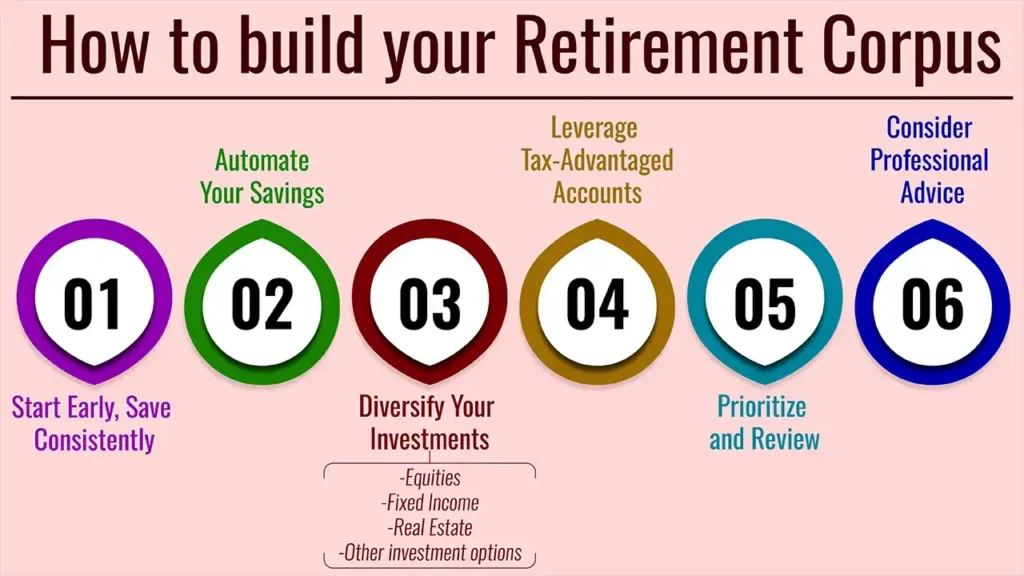Retirement is one common dream – to put away the daily grind and welcome in a new, free chapter of life. But for most people, the real question is, “How Much Do I Need to Save to Retire?” There is no specific number you should enter; only you can provide the right answer to that deeply personal calculation, based on the kind of lifestyle you hope to lead in the future, your current age, anticipated lifespan and the ever-looming factor of inflation.
This article will help you piece together the retirement so that you can not only gauge how much money you’ll need to build for your golden years but also construct a powerful financial planning for a secure future – no matter where you live.
Knowing How Much Do I Need to Save to Retire?: It’s More Than Just a Number
Only once you’ve seen yourself in your post-retirement life can you determine how much you need.
1. Define Your Retirement Lifestyle
- Current Expenses vs. Future Spendings: To compare your current monthly and annual expenditures to how you will retire, begin by recording both sources of data in a list. Now consider how these could change in retirement. Will you travel more? Pursue new hobbies? Or perhaps downsize your home?
- Necessity Spending vs. Want Spending: The overall idea is to prioritize your spending between the necessities (housing, food, healthcare, utilities) and the wants (travel, entertaining, luxury products). While some costs may go down (such as commuting), they would also likely rise in some cases—such as healthcare.
- Medical Costs: A key, underappreciated issue. Medical expenses the world over are soaring; in such an environment, a sound health corpus or a good cover becomes indispensable. Experts are advising people to set aside a hefty chunk of your retirement treasure chest to be used in medical expenses specifically. For insights into the importance of health insurance in retirement, Acko offers valuable information.
2. Consider Inflation: The Silent Wealth Erosion
Rising prices are a major problem when it comes to planning for the long-term financial stress. What might feel like a comfortable amount today isn’t likely to feel as comfortable 20-30 years from now. Inflation is different in different countries and economic conditions, but it’s something to factor in.
- The Impact: Your current spending floor may not be sustainable in 25 years, when your expenses could more than double to over $120,000 a year at a 3% annual inflation rate.
- Mitigation: You’ll need to ensure that retirees’ investments grow enough to outpace inflation and protect your buying power.
3. Figure Out When You’ll Retire and How Long You’ll Live
When Do You Plan to Retire? The younger you retire, the more years you will have to cover your expenses during retirement, and hence, would need a higher corpus. Some are targeting early retirement in their 40s or 50s, while others hope to work until their late 60s or even longer.
How Long Will You Live? Life expectancy is increasing all around the world as health care and living conditions get better. It is wise to assume a retirement of at least 25-30 years, if not longer, to avoid outliving your assets.
How to compute your retirement corpus? Practical methods.
And as good as online retirement calculators are, knowing how to calculate retirement yourself is important.
Exponentials, the “25x Rule” (and its Variations)
A common rule of thumb is to aim to have saved 25 times your projected first year’s retirement expenses. For instance, if you want to spend $60,000 a year in retirement (in current dollars), then you would need $1.5 million.
This rule presupposes a somewhat stable withdrawal rate (generally estimated to be around 4%, although it can fluctuate depending on market conditions and personal risk tolerance).
A More Comprehensive Approach:
Here is a step-by-step approach which also addresses the financial realties:
1. Calculate Your Retirement’s First-Year Spending Needs (Inflation Adjusted):
Take your current annual expenses. Then forecast that number forward to your retirement year, with an inflation rate plugged in (3%, say). Example: Annual expense at present = 50,000 * (1 + 0.03) ^ 25 ≈ $104,680.
2. Determine Your Total Retirement Corpus:
And here is where a retirement calculator can be an enormously useful tool. It will consider your annual expenses in the future, how long you expect to live in retirement and what rate of return you expect on your investments during retirement.
Formula (simplified):
Corpus Required = (Future Annual Expenses / (Expected Return Rate in Retirement – Inflation Rate)) * [Factor of life span]
Many of the financial institutions from around the world that we have compared have an online calculator that will assist you with this hard-to-calculate figure, which will consider elements such as:
- Current age
- Retirement age
- Life expectancy
- Current monthly expenses
- Expected inflation rate
- Expected pre-retirement investment return
- Expected post-retirement investment return
- Current retirement savings
- Any anticipated pension income (social security, company pensions, etc.)
Ballpark Figures (Highly Variable):
Although it’s very much a personal choice, rule-of-thumb figures for a comfortable retirement tend to range from $1 million to $5 million (or more). A $40,000–$60,000 lifestyle could suffice for a simple, comfortable existence. This comes from a corpus of $1 million – $1.5 million over 25-30 years. For a large city or a more extravagant lifestyle, this amount could be doubled or tripled.
How to build your Retirement Corpus

With the target corpus in mind, it is on to setting up a strong savings and investment plan next.
1. Start Early, Save Consistently
It’s compounding that is your best friend. The sooner you start, the less you have to save each month to hit your target. And even relatively modest routine investments can grow to a significant sum over decades.
2. Automate Your Savings
Automate contributions to your retirement-themed investment accounts. What people don’t see, they don’t think about, and that can be a great motivator to save more.
3. Diversify Your Investments
Avoid putting all of your eggs in one basket. A balanced portfolio typically includes:
- Equities: For long-term growth and returns that beat inflation (for example, diversified stock funds, index funds, ETFs).
- Fixed Income: Stick to these easier for stability and less for risk, especially the closer you get to expecting retirement (bonds, government securities, certificates of deposit).
- Real Estate: Has the potential for rental income or capital appreciation.
- Other investment options: (e.g., commodities such as gold) can be a way to hedge against inflation and economic instability.
4. Leverage Tax-Advantaged Accounts
Research tax-advantaged retirement plans in your country (the United States), such as employer-sponsored plans (401(k), 403(b), 457, and pensions) or individual retirement accounts (IRAs, Roth IRAs, and RRSPs in Canada).
5. Prioritize and Review
Retirement planning is not a one-shot deal. Revisit your plan on a regular basis (at least once a year) and make necessary updates due to changes in income, expenses, inflation or the performance of the market.
6. Consider Professional Advice
With local CFPs, you get that personal touch to set up your tailor-made retirement plan and wade through the murky world of investments while getting clarity on tax rules in your area.
Conclusion
Retirement planning can sound intimidating, but with a few easy steps and a head start – don’t delay – you could have a bright and secure future. Because remember, it’s not just about having as much as you can in your account.
It’s about being able to finally live the dream retirement you’ve always imagined. Take action today, decide what you want out of life, and allow the magic of regular saving and smart investing to move you closer to your goals.
Frequently Asked Questions
1. What is a reasonable corpus to have at retirement?
It’s complicated and depends in large part on your lifestyle and where you live, but in simple terms, a realistic average “corpus” you’ll need for a comfortable retirement might be anywhere from $1M to $5M+ in terms of income associated with inflation and a long retirement.
2. Is the 4% rule a good rule of thumb for retirement withdrawals?
There’s that ol’ 4% rule (taking half your portfolio in the year you retire and then adjusting for inflation) that may apply somewhat differently.
Its efficiency may be affected by factors such as how the market is performing, the level of inflation, and individual risk appetites.
Some financial planners recommend a more conservative or aggressive withdrawal approach.
How much should I save on a monthly basis for retirement?
The monthly savings amount would be a function of your current age, when you would like to retire, expected income need post-retirement and the target corpus. Online retirement calculators can provide an exact number for how much you need to invest each month.
As a rule, the sooner you begin saving, the smaller the percentage of your income you’ll need to save (say 10-15%); the longer you wait, the more you’ll need to save (20-30%, or more).
4. Do I need to pay off all my debt before I can begin investing?
Ideally, yes. It can also keep your post-retirement expenses lower and make you feel even more financially secure going into retirement if you are debt-free, especially with high levels of debt such as a mortgage. That’s one way to keep your retirement money going longer.
5. Just how important is retiree health insurance?
Extremely important. Retirees are also facing significant health costs globally. That’s why its important to have good all-around health insurance and a separate medical fund (outside of your FRS) to protect your retirement savings from health-related expenses not covered by insurance.

Leave a Reply